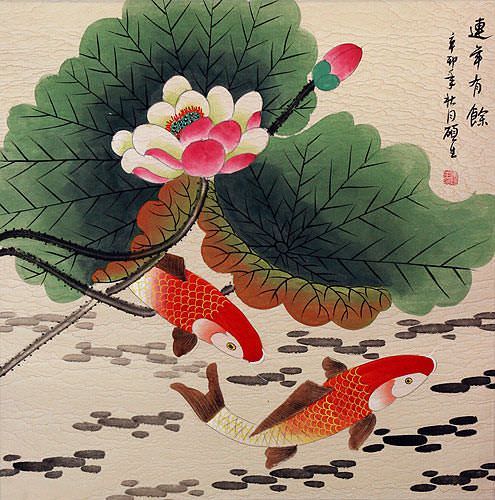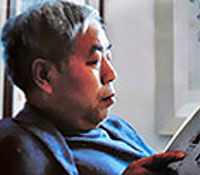
29¾"
29½"

Approximate Measurements
Artwork Panel: 65.2cm x 65.7cm ≈ 25¾" x 25¾"
Silk/Brocade Border: 75.2cm x 75.7cm ≈ 29½" x 29¾"




This is a gorgeous koi fish painting that you will be proud to hang in you home.
The title is 連年有餘 which basically means, "year in, year out, have abundance". The word for abundance sounds like "yu". The word for fish is a homophone to this abundance character in Chinese. Therefore, fish have come to represent having abundance in Chinese culture.
The inscription and signature read, "辛卯年 秋月 碩生" which translates roughly as, "8th-Heavenly-Stem [of the] 4th-Earthly-Branch Year (An indication this was painted in 2011), [under an] Autumn moon, Shou Sheng".
If you are not completely delighted, I will refund everything, including shipping costs, and even pay your postage to return this artwork to me.

The Artist, Kang Shuo-Sheng
The artist's name is 康碩生 (Kang Shuo-Sheng). Sometime in the Spring of 2012, I met him in Jinan city which is the capital of Shandong Province in northern China. I loved the detail of his work and picked up a few of his pieces. I often keep good ones like this around for my personal decorating, when I am called to decorate a fancy Chinese restaurant. I've had some of these sealed away in a flat file drawer for more than a few years. I guess it's time, like fine wine, to release these to the public.
Kang Shuo-Sheng was born in 1952 in Shandong province. From a young age, he had great interest in traditional Chinese painting style. His formal art studies began in 1978 at the Shandong Art Institute. His specialty quickly became bird and flower paintings.
Soon after, he opened his own studio and has quite a following in Shandong, and the rest of northern China. After a fellowship at the Tianjin Art Institute in 2001, he developed an interest in emulating the art styles seen during the Yuan, Ming, and early Qing dynasties.